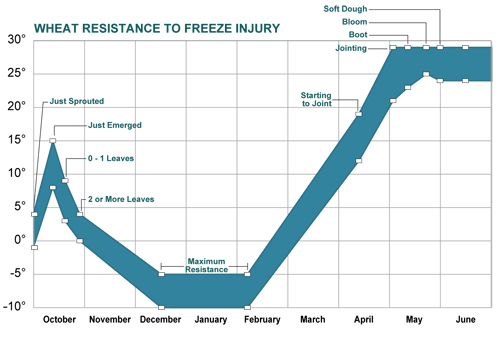Winter wheat’s winter survival
Michigan wheat is likely OK despite the unprecedented winter.
There is a lot of discussion among growers about this unusual winter weather and its effect on the wheat crop. While this season’s weather is unprecedented, it is reasonable to suggest that wheat is still in fairly good shape. In Michigan, wheat continues to be dormant despite the days where the temperatures were unseasonably warm. The cold tolerance of wheat will persist as long as the wheat remains relatively dormant.
If in the weeks to come, however, new growth is initiated following several days of warm temperatures, there may be cause for concern as wheat’s tolerance for cold temperatures diminishes as the plant progresses through its normal growth stages. In fact, reports from some of the southern reaches of the U.S. winter wheat region are in this position. That is, wheat growth has not only been initiated, but has passed multiple growth states. For this wheat, the risk of cold damage is very possible if temperatures plummet below 20 degrees. The figure below from A.W. Pauli is widely used to illustrate the relationship between temperatures and growth stages.
Temperatures that cause freeze injury to winter wheat at different growth stages (adapted from A.W. Pauli)

Here in Michigan, as in most years, the greatest threat to the current crop is in late February and March as alternating freezing and thawing, and flooding, sometimes proves overly stressful. Prior to April, the best way to evaluate the winter survival of wheat is to dig plant samples and place them in a warm environment. Then, after several days, one can observe if significant regrowth occurs.



 Print
Print Email
Email


